What Is the Blue Book Price for a 1996 Ford Taurus With Lesson on a Thousand Miles
Low-mileage, relatively young used cars are often a bad deal. Today we'll explore why and what you can do to save yourself and your money.
The Frugalwoods Fleet-O-Vehicles
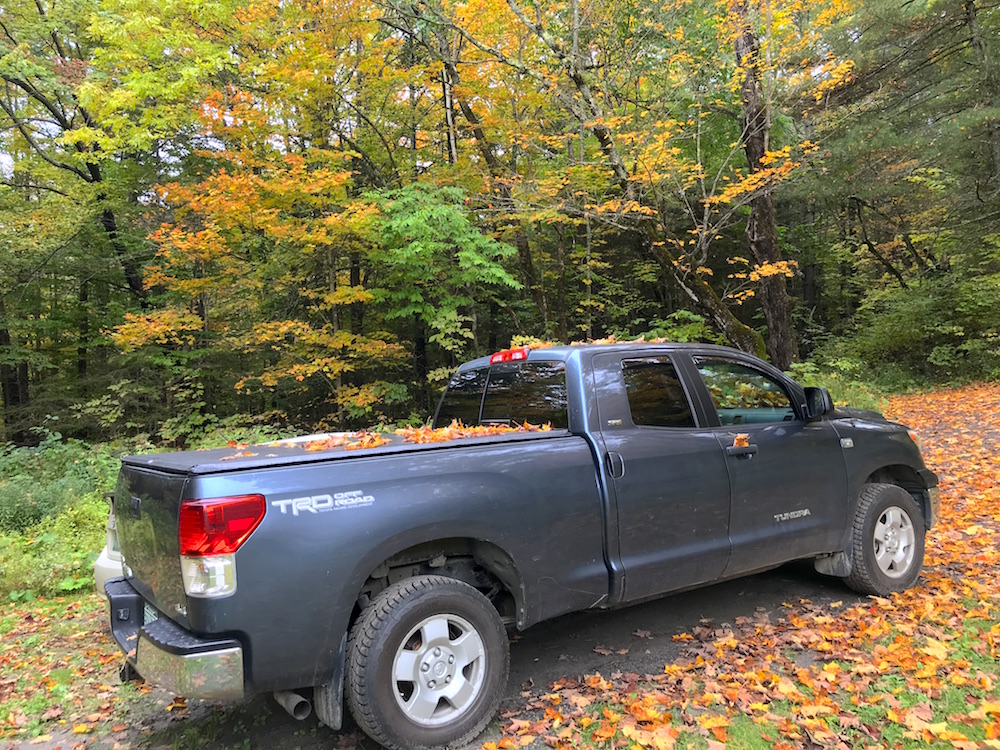
Our 2010 Toyota Tundra
Let me start with a quick rundown of what my husband and I drive our two kids around in:
- 2010 Toyota Prius: purchased in April 2016 for $8,995 at 96,854 miles
- For comparison, had we instead bought a brand new 2016 Toyota Prius, we would've paid circa $24,880
- 2010 Toyota Tundra: purchased in April 2018 for $15,300 at 139,528 miles
- For comparison, had we instead bought a brand new 2018 Tundra, we would've paid circa $37,000
Four notes:
- Apparently we like to buy cars in April.
- We paid cash in full for both of these vehicles, which means we don't have car loans and thus, aren't paying interest.
- We saved 64% off the new sticker price on our Prius and 58.5% off on our Tundra.
- We easily fit two carseats in the backseat of the tiny Prius (there's even room for a box of books and toys between them). Having kids does not necessarily mean you need a huge car.
Depreciation: Use It To Your Advantage
Why did we buy such old cars? New cars depreciate at an astronomical rate and when you buy one, you bear the burden for all of this depreciation. The minute you drive a new car off the lot, it's worth a lot less money because it's no longer brand new.
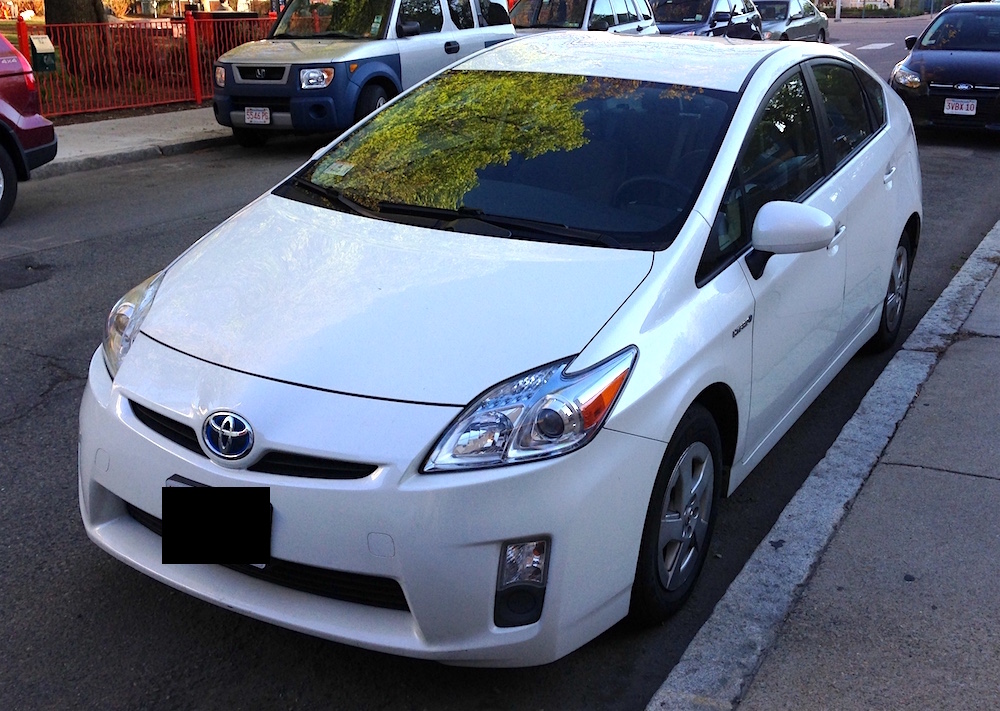
Our 2010 Prius
Conversely, when you buy a used car, you're letting someone else assume the burden of depreciation and you're capitalizing on the slower, more stable depreciation rates of an older car. I know I just said "depreciation" 89 times, so let's pause for a dictionary refresher:
Depreciation: a reduction in the value of an asset with the passage of time, due in particular to wear and tear.
Ok so depreciation is when something loses value over time because it gets worn out. You can see why this is an issue with cars what with their tendency to age and add mileage. Carfax offers this metric:
The value of a new vehicle can drop by more than 20 percent after the first 12 months of ownership. Then, for the next four years, you can expect your car to lose 10 percent of its value annually.
The rate of depreciation is going to vary by make, model, and year of vehicle, so I'd say these percentages aren't universally applicable, but they do serve as a guidepost.
Low Mileage Used Cars Are a Bad Deal
Wait, Mrs. Frugalwoods, I thought you just said to buy used cars!?! I did, but here's the thing, don't buy low-mileage, relatively young used cars. You'll get hosed. Although cars experience an initial burst of depreciation, the key to getting a screaming deal is to wait for their depreciation to essentially flat line.
A low mileage, relatively new used car is still going to experience a lot of depreciation, which makes it a fairly bad deal for you, the savvy car purchaser. Fear not, I've got lots of graphs to help us understand this (and I do mean "us" because I had to spend quality time graphing it up in order to understand this depreciation curve and explain it today. You guys, I have a degree in creative writing, not math… ).
Since we've owned our 2010 Toyota Prius the longest, I'm going to use it as the example car today. Please enjoy the below graph showing four different years of Toyota Prius (2010, 2012, 2014 and 2016) and their corresponding depreciation rates from 2010 to 2019: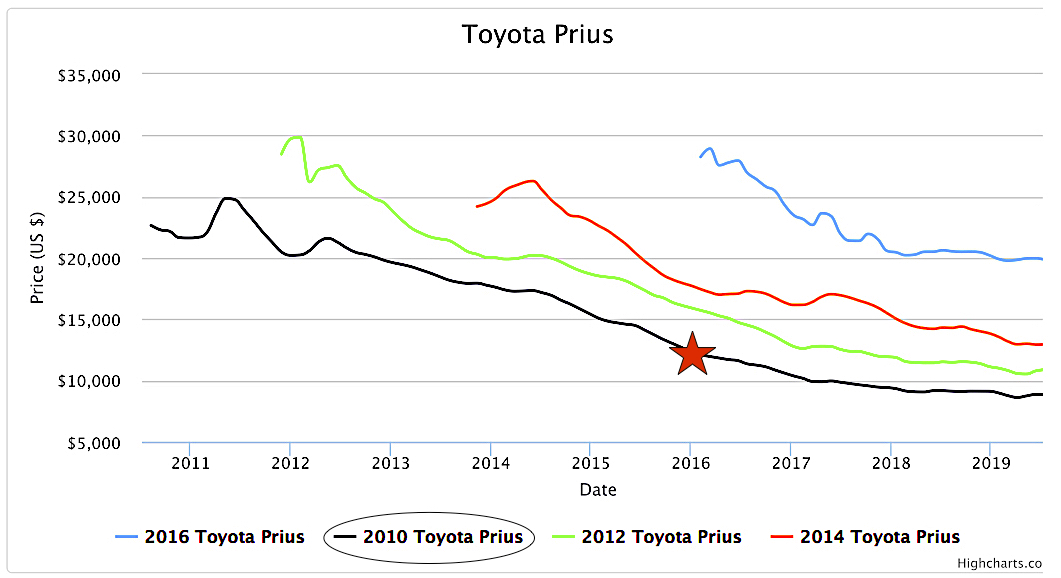
The red star indicates the year (2016) we bought our 2010 Toyota Prius. As you can see, the 2010 Prius had already experienced a great deal of depreciation when we bought it. For comparison, you can see that the other years of Prius graphed (2012, 2014, and 2016) appear on track to depreciate in similar fashion.
The best case scenario when buying a used car is to identify the sweet spot where depreciation flat lines (or close to it), but where the car still has lots of life left. One one hand, this is a crap shoot. On the other hand, this is not a crap shoot because you have the internet and the internet has open source data sets!
You can research the crap out of your next used car purchase and make an excellent, informed choice. All cars are not created equal and some makes and models are better than others and run longer than others. There, I said it. I'm car-ist. I'm sorry, but some cars simply perform better over time than other cars. Cold, hard fact. I made these graphs using the data on CarGurus.com, which is a great starting point for researching the price trends of any make, model, and year you're interested in.
As these graphs show, there is indeed a steep initial depreciation with the Toyota Prius (and most cars), but the real sweet spot occurs years later. Here's another graph to illustrate this sweet spot of depreciation over time: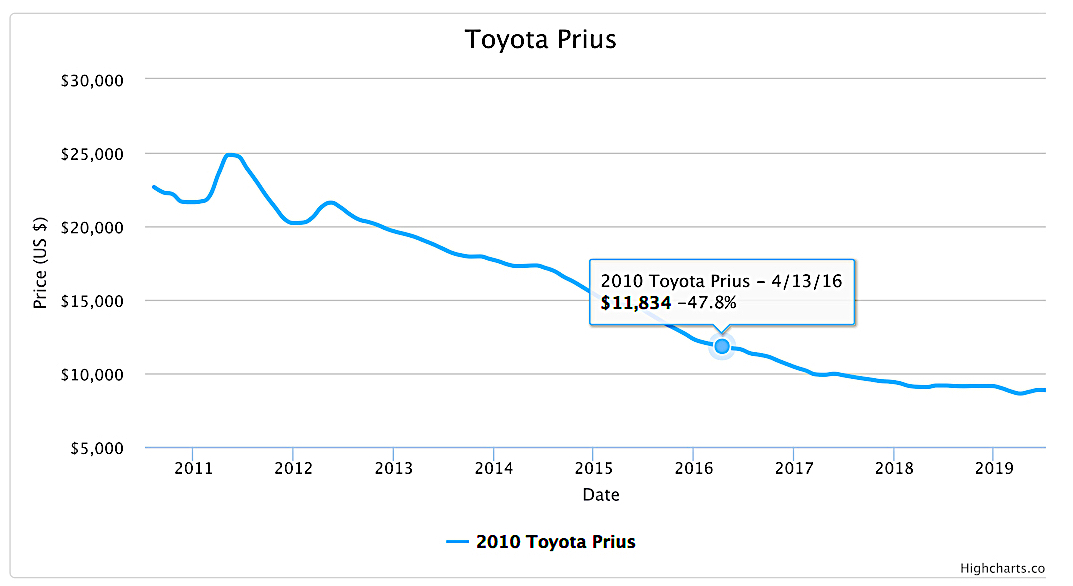
As you can see from the above, we bought our Prius after it'd depreciated a whopping 47.8% (and since we only paid $9,000, the depreciation was even greater). So while yes, there's a precipitous initial drop-off in price, the real depreciation happens later. By buying a car after most of the initial depreciation, we're avoiding those costs and getting a great deal.
Here's a graph illustrating why buying a newer, lower mileage used car isn't a good idea:
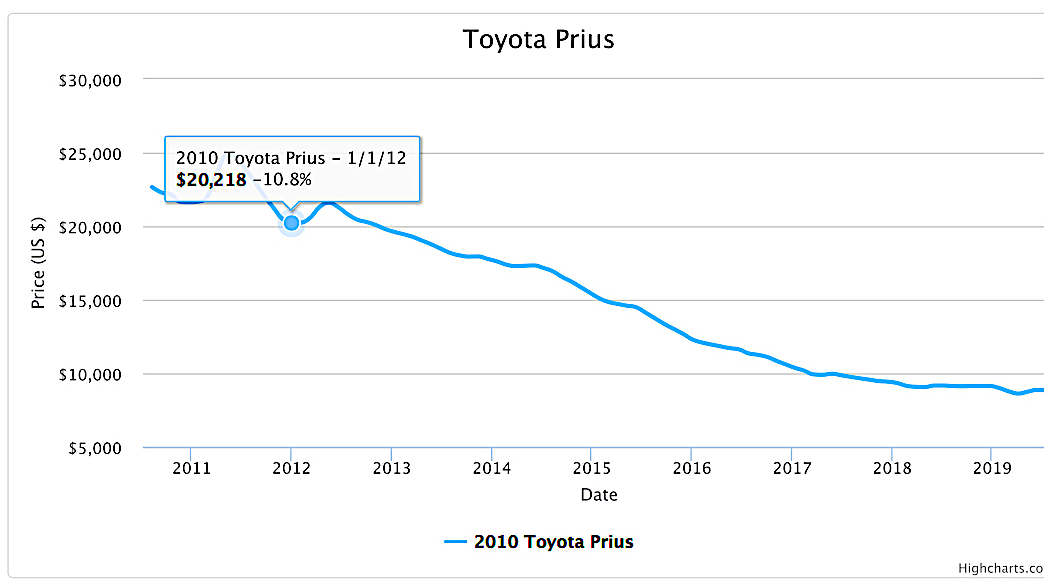
Ok so what this graph shows is that had we purchased a used 2010 Prius in the year 2012, we would've paid a staggering $20,218 and only had a 10.8% rate of depreciation. Whoa, buddy! That's barely a discount off of new and the car still has miles of depreciation ahead of it. This means that a newer used car hasn't depreciated enough to deliver a deal on price. You gotta go older!
While it's impossible to predict precisely when a particular make and model of vehicle will hit depreciation stasis, it is possible to use these historical trends to inform your next purchase.
What About Maintenance? What About Repairs!?!?!?!?!?
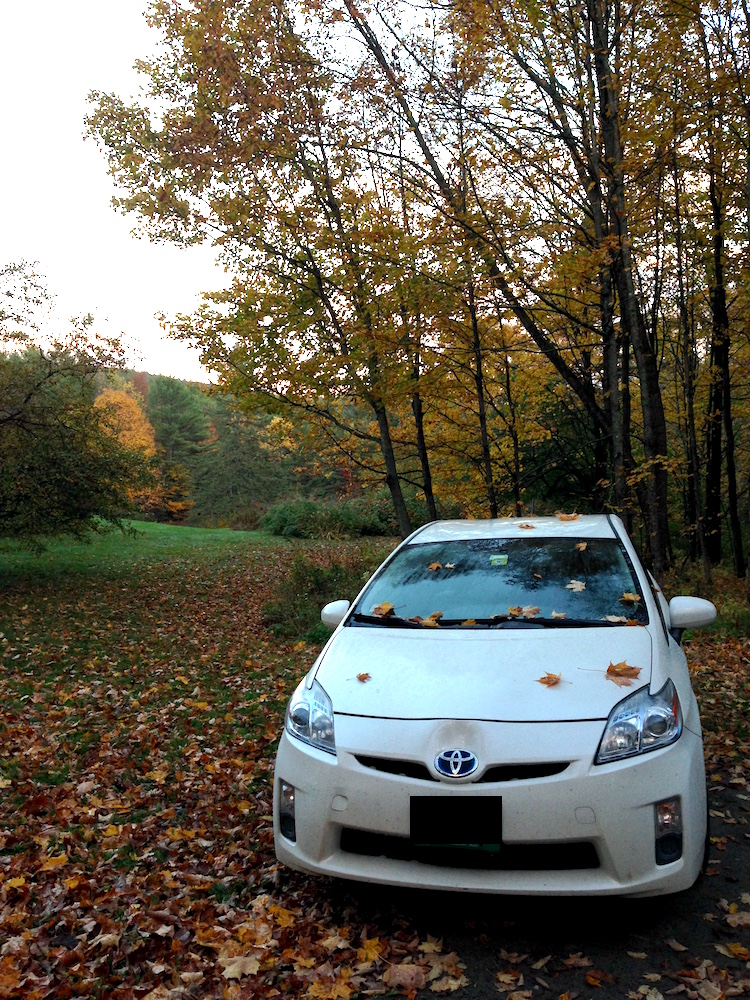
Our 2010 Toyota Prius
Now that we've established a higher milage, older used car delivers better value, let's talk about caring for such a vehicle. I know a lot of you are averse to this idea. You want a car that's reliable, safe, and won't require tons of maintenance. Well, so do I!
This is the refrain I hear all the time from the chorus of used-car-doubters:
I like to buy brand new cars in order to avoid maintenance issues. Plus, I'll drive this car forever, so it'll be worth it.
Here's the thing: you don't avoid maintenance issues with a new car. Sure, there might be fewer issues early on and the maintenance might be more spread out, but there's no such thing as a 100% maintenance-free vehicle. At the very least, you've got to pay for an annual inspection, insurance, and regular oil changes. Here's the other thing: even if you drive it "forever," you're extremely unlikely to come out ahead of where you would've been had you purchased a used car to begin with (see depreciation graphs above).
Since maintenance is one of the most oft-cited reasons for buying new from the anti-used-car contingent (and the anti-old-used-car contingent), I'm going to share the maintenance log for our 2010 Prius.
Before we get to the log, I would like to take a moment to thank automatic spell check software because, based on the number of squiggly red lines in the above paragraph, I am a 35-year-old professional writer who does not know how to spell "maintenance." Moving along…
You Have Car Maintenance Logs?!
I know, I know, we're nerds to the core. The hard core, I like to think. My husband–Mr. Frugalwoods–and I use spreadsheets to quantify, compare, and record just about every aspect of our lives. What can I say, it makes stuff easier! Earlier this month, I mentioned that I maintain a spreadsheet tracking our household systems (septic system, boiler, propane tank, etc) and their maintenance/delivery needs and you all thought that was strange. You guys, I had no idea this wasn't normal!
Back to the task at hand: Mr. FW is in charge of our vehicle maintence logs. He keeps records on our tractor, both cars, his chainsaw, and the lawn mower. It's not super time consuming to maintain these logs because we input the data after each service event. For ease of sharing these documents with each other, we use Google docs and sheets. Given this record-keeping, it's easy for me to share with you all exactly how much our Prius has cost over the years. TLDR: not much.
2010 Toyota Prius Maintenance Log
| Date | Mileage | Action | Performed By | Cost |
| 6/5/2016 | 97,500 | Replace Rear Brake Pads | Local Mechanic | $139.10 |
| 5/23/2017 | 106,248 | Replace Left Front Wheel Bearing, Inspection, and Oil Change | Local Mechanic | $168.00 |
| 6/29/2017 | 108,011 | AC Recharge | Local Mechanic | $90.13 |
| 7/3/2017 | 108,171 | Curtain Airbag Recall | Toyota Dealership (free as covered by a recall) | $0.00 |
| 11/14/2017 | 112,828 | Replace Rear Brake Pads and Rotors | Local Mechanic | $402.06 |
| 6/7/2018 | 118,543 | New Summer Tires Mounted, Inspection, and Oil change | Local Mechanic | $166.00 |
| 7/19/2019 | 135,671 | Oil Change and Inspection | Local Mechanic | $143.24 |
| TOTAL: | $1,108.53 |
As you can see, we've spent $1,108.53 maintaining the Prius since we bought it in April 2016. However, it's important to note that many of these expenses would've been incurred by a new car too, including:
- Annual state inspections
- Regular oil changes
- New tire mounting
This log does not include the cost of the tires themselves, which is covered in our monthly expense reports (see last month for our most recent tire purchases).
A couple notes on how we keep maintenance costs low:
- We use a local mechanic, not the dealership
- We buy most of our parts ourselves online (our mechanic is in favor of doing this–in fact, he's the one who suggested it)
- We perform regular, routine maintenance to try and prevent serious issues
So while $1,108.53 spent over the course of four years isn't nothing, it's nowhere near the $15,885* we would've spent on a brand new Prius in 2016.
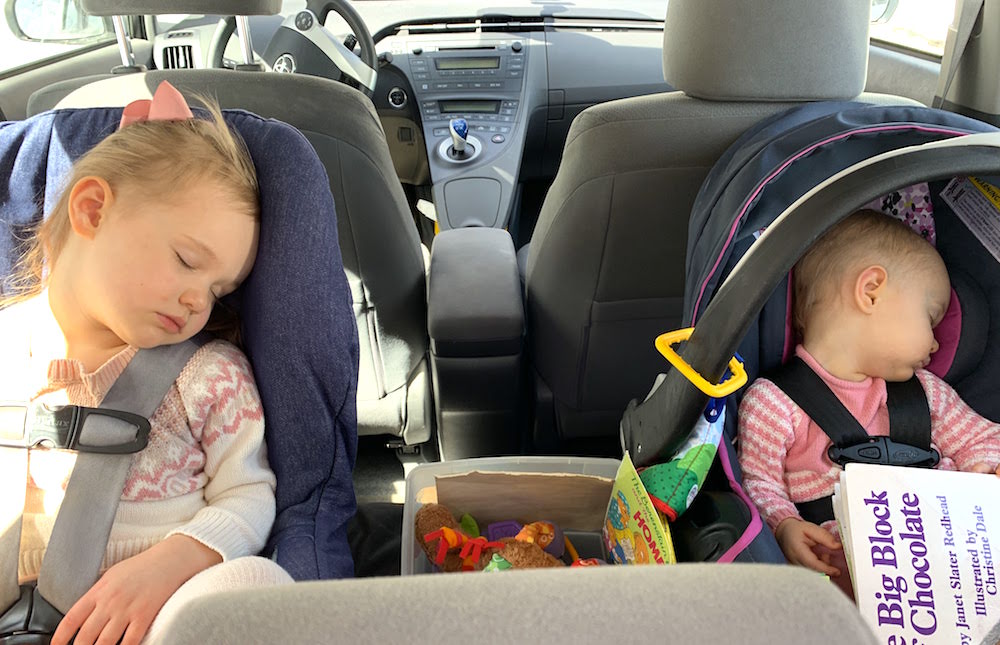
Two carseats in the back of the Prius! (and yes, I know that Littlewoods' carseat buckle is too low–it should be at her armpit)
If we'd bought a new car (or a low-mileage used car) in order to avoid maintenance costs, we would've spent $15,885 in order to save $1,108. Even I can tell that math doesn't make sense.
*this is the cost of a new Prius in 2016 ($24,880) minus what we paid for our used Prius in 2016 ($8,995)
It's hard to quantify all of this because different cars have different maintenance issues at different times. So no, this is not universally applicable. Yes, you could end up with a lemon of a used car. But what I hope to illustrate is that I think it's worth the risk to buy an older used car because the margins are so tremendous.
We're not talking about a couple thousand bucks saved, we're talking about many tens of thousands of dollars saved. Plus, worst case scenario: you decide your older used car is not the car for you and so you re-sell it for close to what you paid for it. How is this possible? Because if you buy a car after most of its depreciation occurs, you can then re-sell the car for close to what you paid for it! This is not apocryphal. This is what we did. Read below.
Re-Selling An Older, Used, High Mileage Car: Totally Works, We've Done It Twice
Longtime readers might recall that in early 2016, we bought a 2010 Subaru Outback for $12,000.
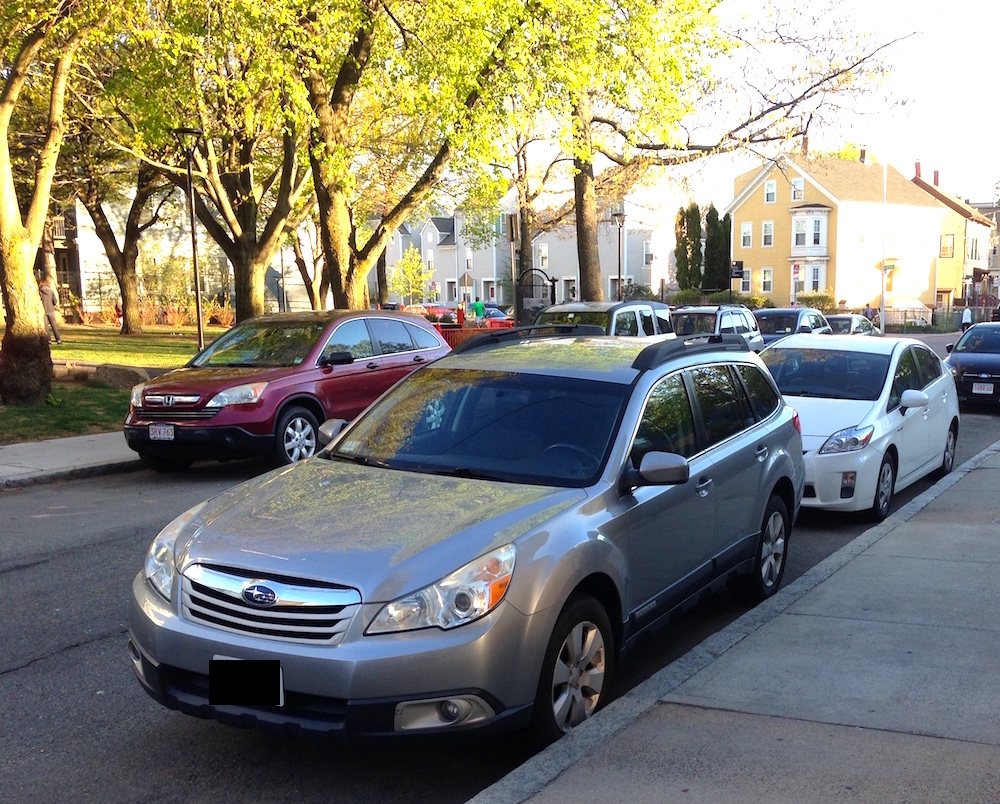
Our lovely 2010 Subaru
After living on our 66-acre homestead for several years, we realized we wanted a truck as our second car, so we sold the 2010 Outback in July 2018 for $9,300. This is a pretty modest rate of depreciation and proof that you can buy used and re-sell used and not lose all that much money.
Prior to this, Mr. FW and I drove a 1996 Honda Odyssey minivan, which we sold for $1,000 in 2016. Prior to that, I only had one other car, which was the car I bought with my own money (for I think somewhere around $3,800) at age 16 in the year 2000: a 1990 Toyota Camry Station wagon.
Oh yeah, I was cool. Actually, since I was in marching band, my friends loved the 'wagon because we could fit all of our instruments in the trunk. As I said, super cool.
Higher Mileage Used Cars For The Win
In Summary:
- Low-mileage, young used cars are usually a bad deal because they haven't depreciated enough.
- Look for higher mileage, well-made used cars with excellent longevity ratings.
- Pay for them in cash (if at all possible) to avoid incurring interest payments on a loan.
- Research the make and model you're interested in to determine (to the best of your ability) where the depreciation curve appears to flatline.
- Take good care of your elderly car and it'll keep running. A car that's reasonably well-maintained and well-built is just getting started at 100,000 miles. Plus, older cars are cheaper to insure.
- I've finally learned how to spell maintenance.
What do you drive?
Never Miss A Story
Sign up to get new Frugalwoods stories in your email inbox.
Success!
boothwheirlemse1976.blogspot.com
Source: https://www.frugalwoods.com/2019/10/25/why-buying-a-low-mileage-used-car-is-the-worst-of-both-worlds/
0 Response to "What Is the Blue Book Price for a 1996 Ford Taurus With Lesson on a Thousand Miles"
Post a Comment